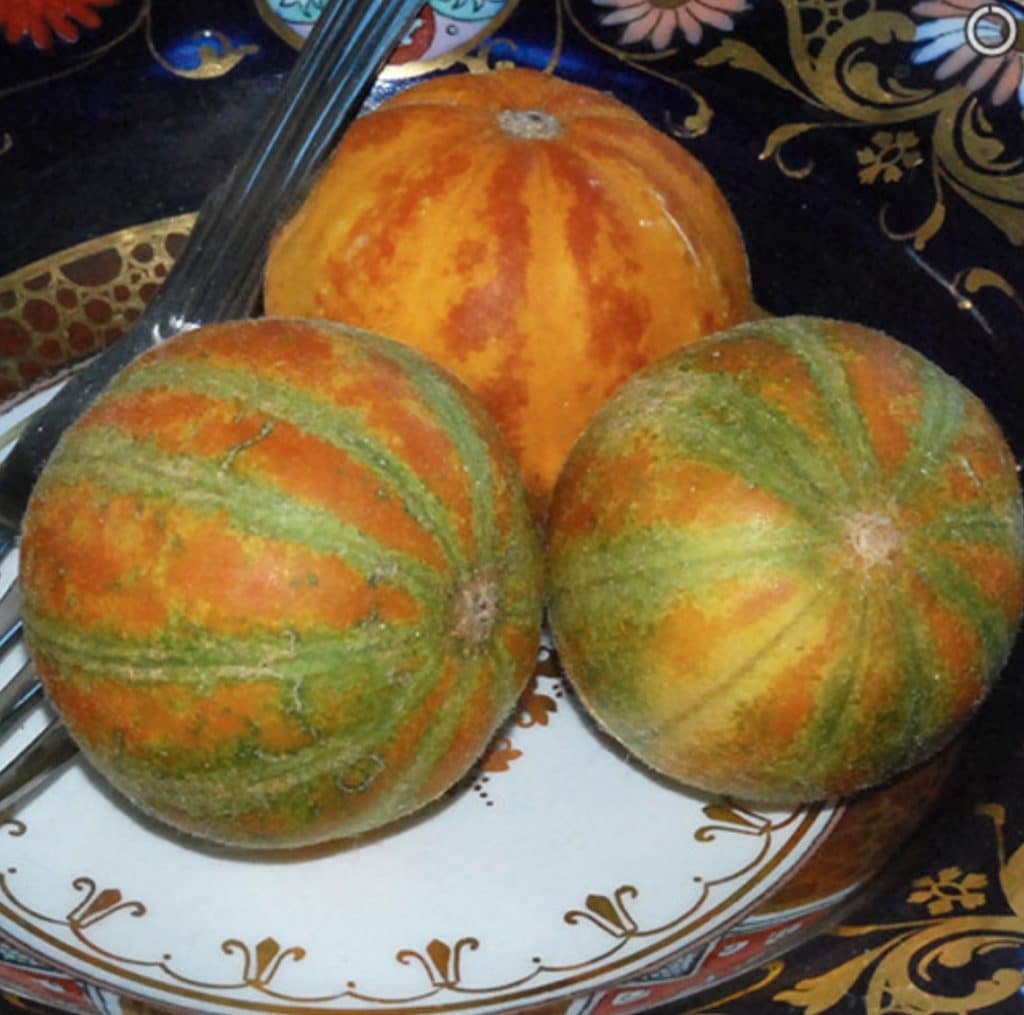If you love melons, it’s easy to grow your own, and plum granny is one of the best varieties. The seeds can be sown in the early spring once the threat of frost has passed. Plum granny is also commonly called Queen Anne’s Pocket Melon and is a delicious melon with white flesh. The heirloom variety produces small fruits about the size of an apple and has striped orange and cream, green- or yellow-colored skins.
Plum grannies make tasty treats for the whole family. The plants are relatively rare and, at one point, almost became extinct. The Victorians used these sweet-smelling melons to disguise body odor by carrying them around in their pockets. Let’s look at when to plant plum granny seeds. We’ll also provide you with some growing tips.
When is the best time to plant plum granny seeds?
image courtesy of plantworldseeds
As each package of seeds will come with different growing instructions, it is best to look at them before planting the seeds. Plum Granny Seeds need a warm soil temperature in order to germinate successfully. If you are planting indoors, you can plant slightly earlier to get a head start on the growing season. You can then transplant the seedlings outdoors after all danger of frost has passed. Place the planted seeds in a warm, moist environment and keep them at around 70 degrees Fahrenheit (21 degrees Celsius).
If you plant your seeds directly in the garden, make sure they are no deeper than ¼ inch (¾ centimeter), and plant at least four feet apart so the vines don’t cross. Planting in pots or planters allows you to bring your plants inside if there is a threat of frost.
How to Care for Plum Granny Seeds
When caring for plum granny seeds, be sure they receive at least six hours of daily sunlight in a warm location. The melons need protection from wind, so place them in a sheltered area such as along a fence line or at the base of a wall.
Plum granny plants like their soil to be on the dry side, as this will prevent rot and promote growth. If you are planting in pots or planters, make sure that the drainage holes are open and water is allowed to flow through at all times.
Make sure your plants receive enough nutrients by adding compost to the soil. If you aren’t sure your soil is rich enough, try using an all-purpose organic fertilizer at the beginning of spring. Don’t over-fertilize as this can cause too much growth, which will make proper pollination difficult.
Conclusion
Plum granny seeds can be planted in the early spring as long as the threat of frost has passed. If you live in a colder area, you may need to wait until the late spring before planting your melon seeds.
Water your seeds daily until they sprout, and continue watering at least once a week throughout the summer. Water them a little more often during dry spells. And once the vines produce fruit, be sure to harvest the fruit at its peak ripeness.
